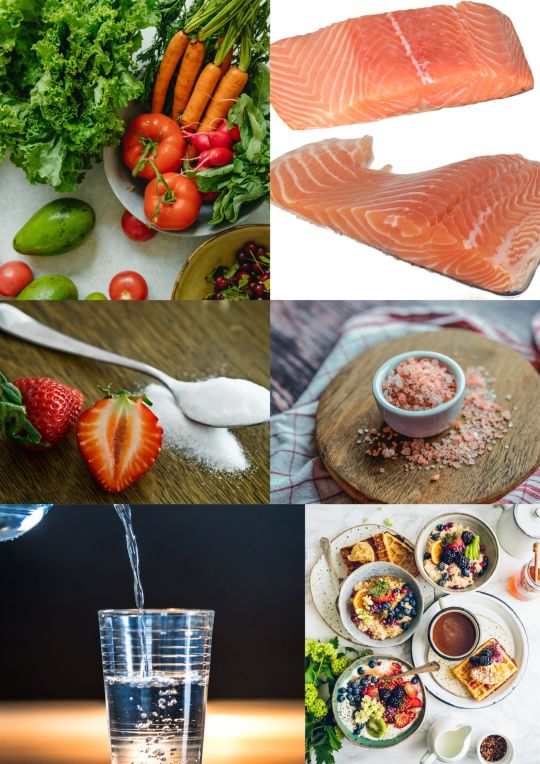Don't wanna be here? Send us removal request.
Text
Traditional Maharashtrian Food
Food from Maharashtra has a lot to offer. Maharashtrian cuisine can be broadly divided into the Konkan and Varadi kinds of food. The Goan, Saraswat, Gaud, and Malvani regions have influenced the Konkan, a coastal region. The Vidarbha region is home to the Varadi cuisine, on the other hand. In the Maharashtrian kitchen, spices like Goda Masala, Kokum, Tamarind, and Coconut are necessities. Maharashtrian cuisine is regarded as being particularly diversified since regional variations in flavours and spice intensity exist.
The Marathi people are from the Indian state of Maharashtra, and their food is known as Maharashtrian or Marathi. Despite having many similarities to other Indian cuisines, it has unique characteristics. Maharashtrians have traditionally regarded their cuisine as being more austere than others.
There are both mild and spicy meals in Maharashtrian cuisine. Dietary staples include wheat, rice, jowar, bajri, vegetables, lentils, and fruit. Vegetables are frequently served with peanuts and cashews. Due to prevailing economic and cultural factors, meat has historically been consumed infrequently or exclusively by the wealthy.
The urban population of the state’s major cities has been impacted by foods from other regions of India and from other countries. For instance, Chinese and Western cuisines like pizza, as well as South Indian meals like idli and dosa, are highly popular in restaurants and at home.
Kande pohe, Thalipeeth, aluchi patal bhaji, and ukdiche modak are dishes that are uniquely Maharashtrian.













0 notes
Text
Position Of Each Item In Dish
Arrangement Of Food Dish-
There is a particular arrangements to set up a thali or a particular location where the food is served in Maharashtra. Salt is placed at the top of the dish, 12 o’clock, and all other condiments, snacks, and salads are placed on the left side. A piece of lime, chutney, pickle, snack, and papad are immediately adjacent to the salt and are arranged anticlockwise. Variety of rices are arranged vertically (top down) below the salt, and poli/roti/flatbread is positioned at the bottom of the plate at 6 o’clock. On the right side of the salt are all the curries and dals.
INGREDIENTS:-
Salt
Slice of Lemon
Green Chutney
Raita
Pickle
Fried Papad
Aluchi Vadi
Poli
Varan-bhat
Masale bhat
Mataki chi usal
Potato dry sabzi
Amti
Aloochi bhaji
Mattha
Gobi-matar gravy sabzi
Jilabi
Shrikhand
Arrangement Of Food Dish:-
starting with the left side. Keep the water glass in its original position on the plate’s left side. We shouldn’t lift the glass with the right hand while eating. A glass of water is always kept on the left to prevent that.
Ayurveda also advises against drinking a lot of water when eating. Another justification for keeping the water glass to the left is this. The salt is at the top left, followed by the lemon, green chutney, raita, and pickle. Less food must be consumed of the items that are provided on the left. They receive that on the left side of the plate. After that, offer fried foods like papad and alu chi vadi. In the middle.
Our main meal is in the centre and right sides of the dish. Serve amti in katori, aloochi bhaji, and mattha alongside the dry sabzis. The mattha aids in food digestion.
Jaggery and tamarind are used to make amti. Iron is present in jaggery, and the sourness of tamarind aids in iron absorption. Next to that, dish up some gobi-matar gravy sabzi. Serve desserts like jilabi and shrikhand. Keep the jilabi close to the mattha katori since we typically eat jilabi by dipping it in mattha. Our regular meals should have all six “rasas,” which are sweet, sour, salty, astringent, hot, and bitter flavours, according to Ayurveda.

0 notes
Text
10 Healthy Food
Top 10 Healthy Food:-
1.Water-Drink 8 to 12 cups of water daily.
2. Dark Green Vegetables-Eat dark green vegetables at least three to four times a week. Good options include broccoli, peppers, brussel sprouts and leafy greens like kale and spinach.
3.Whole Grains-At least twice or three times a day, consume whole grains. Look for whole wheat, rye, oatmeal, barley, amaranth, quinoa, or a multigrain when choosing your flour. 3 to 4 grammes of fibre per serving are found in a good source of fibre. An excellent source has 5 grammes or more of fibre per serving.
4. Beans and Lentils:-Try to eat a bean-based meal at least once a week. Try to add legumes, including beans and lentils, to soups, stews, casseroles, salads and dips or eat them plain.
5.Fish:-Try to eat two to three serving of fish a week. A serving consists of 3 to 4 ounces of cooked fish. Good choices are salmon, trout, herring, bluefish, sardines and tuna.
6. Berries:-Include two to four servings of fruit in your diet each day. Try to eat berries such as raspberries, blueberries, blackberries and strawberries.
7. Winter Squash:-Eat butternut and acorn squash as well as other richly pigmented dark orange and green colored vegetables like sweet potato, cantaloupe and mango.
8. Soy:-25 grams of soy protein a day is recommended as part of a low-fat diet to help lower cholesterol levels. Try tofu, soy milk, edamame soybeans, tempeh and texturized vegetable protein (TVP).
9. Flaxseed, Nuts and Seeds:-Add 1 to 2 tablespoons of ground flaxseed or other seeds to food each day or include a moderate amount of nuts – 1/4 cup – in your daily diet.
10. Organic Yogurt:-Men and women between 19 and 50 years of age need 1000 milligrams of calcium a day and 1200 milligrams if 50 or older. Eat calcium-rich foods such as nonfat or low-fat dairy products three to four times a day. Include organic choices.

2 notes
·
View notes